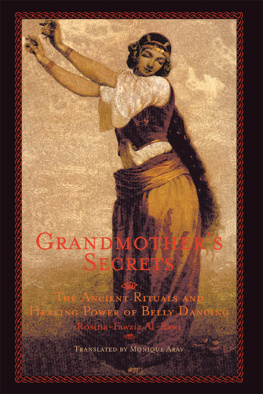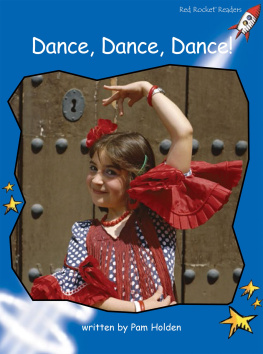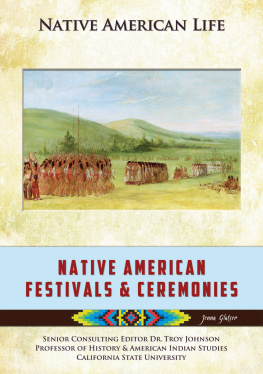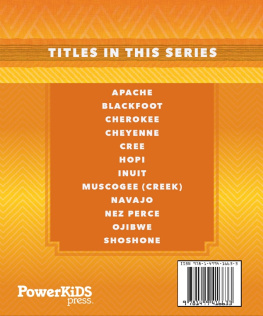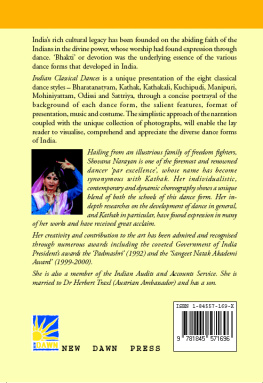ISBN for this digital edition: 978-0-8263-2763-5
1931 by Erna Fergusson.
All rights reserved.
15 14 13 12 11 8 9 10 11 12
ISBN-13: 978-0-8263-1050-7
The Library of Congress has cataloged the printed edition as follows:
Fergusson, Erna, 18881964.
Dancing gods.
Includes index.
1. Indians of North AmericaNew MexicoDances.
2. Indians of North AmericaArizonaDances.
3. Indians of North AmericaNew MexicoRites and ceremonies.
4. Indians of North AmericaArizonaRites and ceremonies. I. Title.
E78.N65F42 1988 299'.74 87-19231
ISBN 0-8263-1050-8
Foreword
Tony Hillerman
One of the first books I bought when fate, and United Press, brought me permanently to New Mexico in 1952, was a used copy of the original Alfred A. Knopf edition of Dancing Gods. It was already twenty-one years old, out of date in a place or two. It was also already bringing a premium price as an item worth collecting for libraries of Southwestern Americana. In 1957, the University of New Mexico Press republished the book with sixteen illustrations by the painters whod given Santa Fe and Taos their enduring reputations as art colonies. By then the book had become a bit more timeworn. But UNM Press called it a classic, and it deserved the title. It still does.
Age increases this books value in an odd way. Those interested in the evolution of the dances of the Rio Grande pueblos, of the Hopis, the Zunis, and the quite different ceremonials of the Navajos can witness in the striking scenes Fergusson gives us just how much, and how remarkably little, a half-century has changed rituals which are as old as time. But thats a special dividend and not the reason the book deserves the classic label the UNM Press put upon it in 1957. It is a classic because of the remarkable woman who wrote it.
Erna Fergusson was born in 1888, a daughter of the rich, influential, and cultured Franz Huning family of Albuquerque. Being native-born, she spent her childhood among the cultures she would write aboutunderstanding them with that special intimacy I think only the innocence of childhood makes possible. She went east for her education, studying the cultures of Latin America at Columbia University and receiving a masters degree. She spent two years working for the Red Cross in rural northern New Mexico. Then her talent for writing brought her home to Albuquerque and a position on the Albuquerque Tribune.
Dancing Gods seems to have grown directly from all of this, and directly from Erna Fergussons subsequent career as what she called the worlds first female dude wrangler. She established Koshare Tours, named for one of the Pueblo clown fraternities, to give eastern visitors an up-close and personal look at what her advertisements called an area still unspoiled by civilization. She bought the first of what would become a caravan of Franklin touring cars and began signing up customers to seeamong other thingsthe ceremonials she would soon be writing about in her book.
For the price of a good dinner for a half dozen people we will give you enough conversational food for a dozen dinners in any company, her brochure promised. It is one thing to see a place. It is another to see it knowingly. And this was the strength of both Koshare Tours and Dancing Gods. Erna Fergusson knew the Pueblo people, and to some extent the Navajos. More important for the book, she had a delightfully clear and uncluttered writing style and a talent for the details which set the scene and bring the participants to life.
Fergusson operated Koshare Tours only five years before selling out to the Santa Fe Railroad and even then it was a part-time occupationdone while holding her society-desk job on the Tribune. Her fees seem incredibly low by todays standards (the twenty-dollar fee for a guided tour of Acoma Country, for example, included meals as well as transportation). Anyone familiar with the love for the high desert country and its cultures expressed in her subsequent books will suspect she did it as much to show the eastern world the land and people she cared about as to make money. There was a sense of urgency in the advertisements she wrote to attract visitors to the most foreign land to land in the United States. Civilization has not yet spoiled it, she said, but it will. In a few years, its primitiveness will be gone forever.
I think wordsmith Erna Fergusson must have chosen that noun, primitiveness, very carefully. Those few years have passed now. The Dancing Gods still form their swaying lines on the Hopi Mesas, on the packed earth of the plazas of the Rio Grande pueblos, and in the autumn firelight at Navajo Yeibichai initiations. Changes have indeed taken place. And the most notable of them have something to do with that fragile sense of the primitive. It is not just that the wagons are replaced by pickups, that English is the language most often spoken, that some bits and pieces of the dancers costumes look Korean-made, that the background lighting when evening comes is produced by electricity. It is a sense that our modern skeptical religion of materialism is crowding in on all sides of the plaza.
And yet nothing important has changed at all. Sometimes I think it has. I see a group of teen-agers practicing basketball while the Council of the Gods makes its dramatic entrance into Zuni Village down Greasy Hill, and I think of faith lost. The next day I see the same teen-agers reverently sprinkling pollen on a passing procession of Saiyatasha, the Rain God of the North, and I understand endurance of the faith has nothing much to do with endurance of the primitive. Among the Navajos, some of the arsenal of curing ceremonials have been lost to time. Among the Pueblos, some adjustments have been made to cope with encroaching strangers. The essentials have not changed since 1921, and will not have changed when this new edition is old.
Those who intend to compare Erna Fergussons view of Indian ceremonialism of the 1920s with todays liturgical events should be warned that the rising flood of tourism has had some effects on the Pueblo peoples traditions of hospitality. It endures, outsiders are still welcome at most events, but some rules which were only implied by the dictates of good manners are now enforced.
For example, never photograph, sketch, or tape ceremonials without first making sure of the rules. Many pueblos either ban cameras or recording equipment or charge fees. Some ban cameras from some events and allow photography at others. Rules tend to change, so ask.


